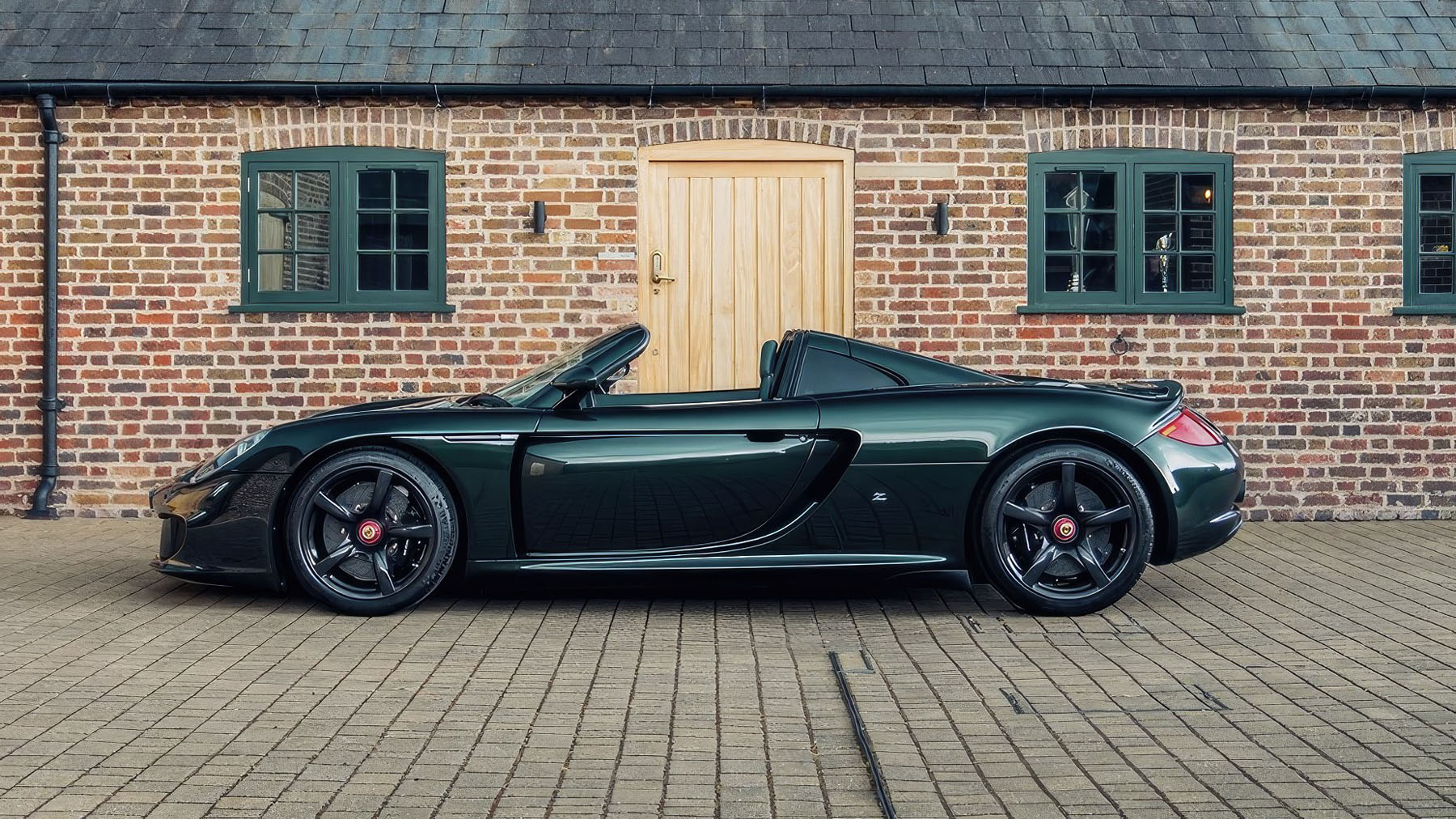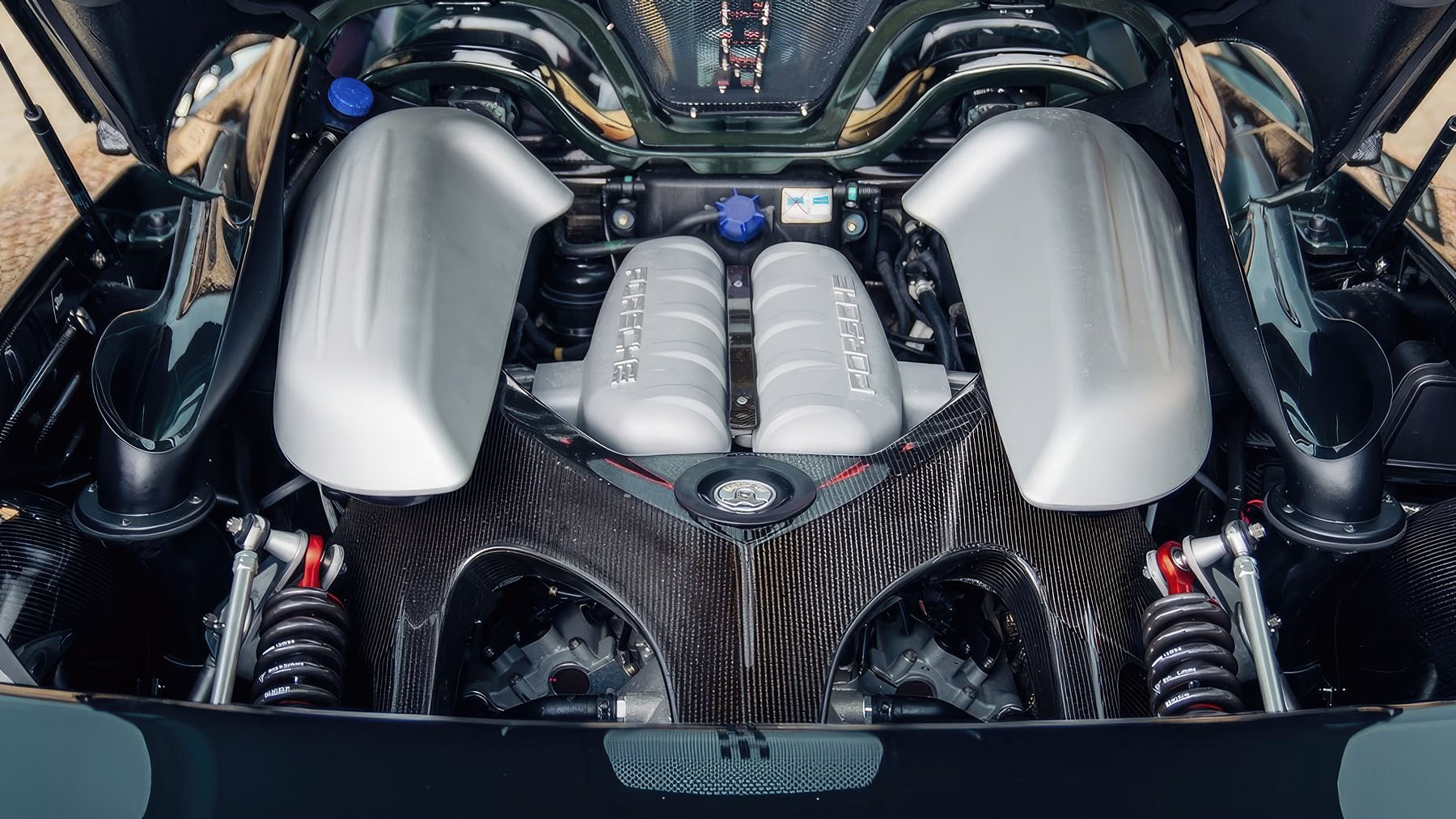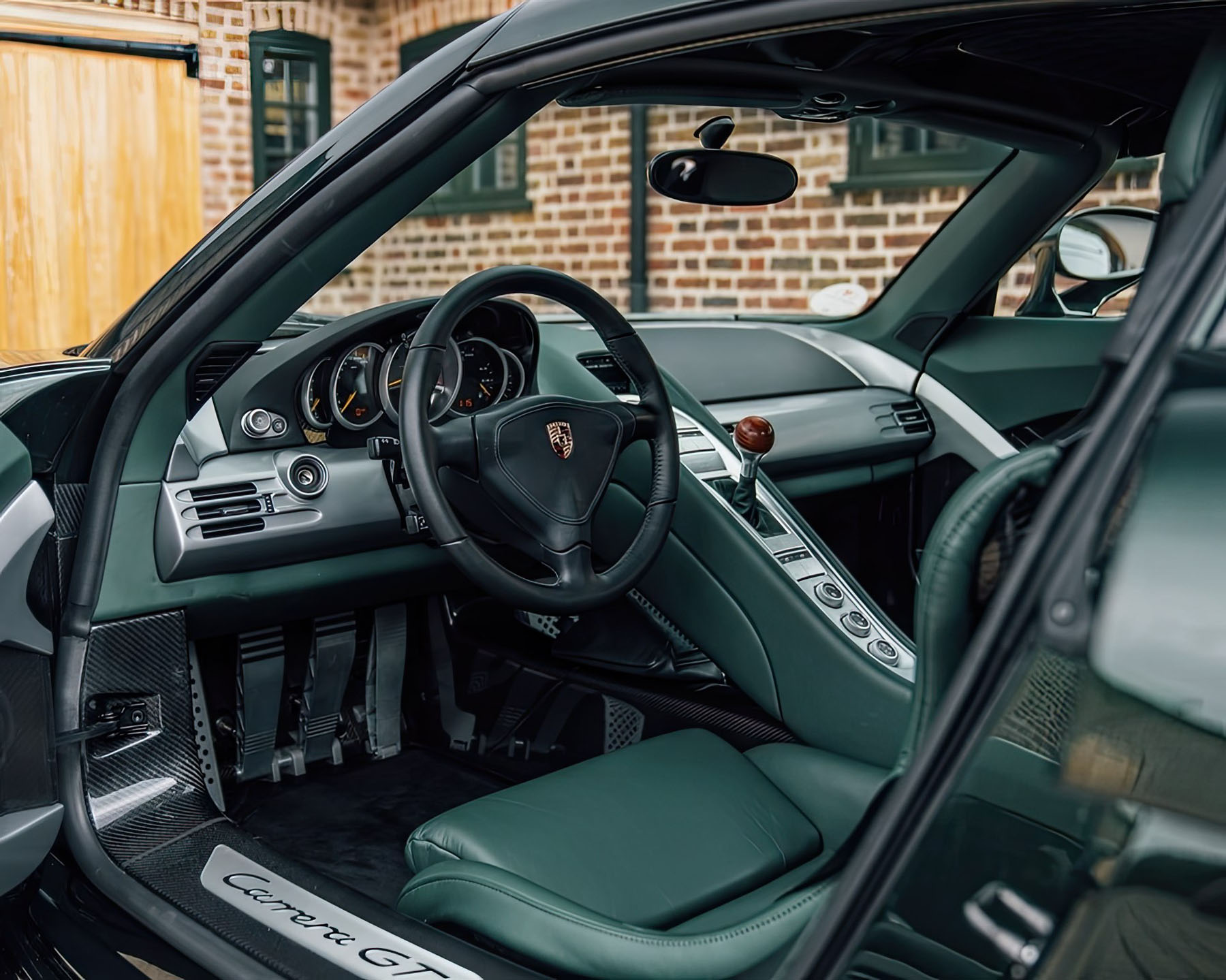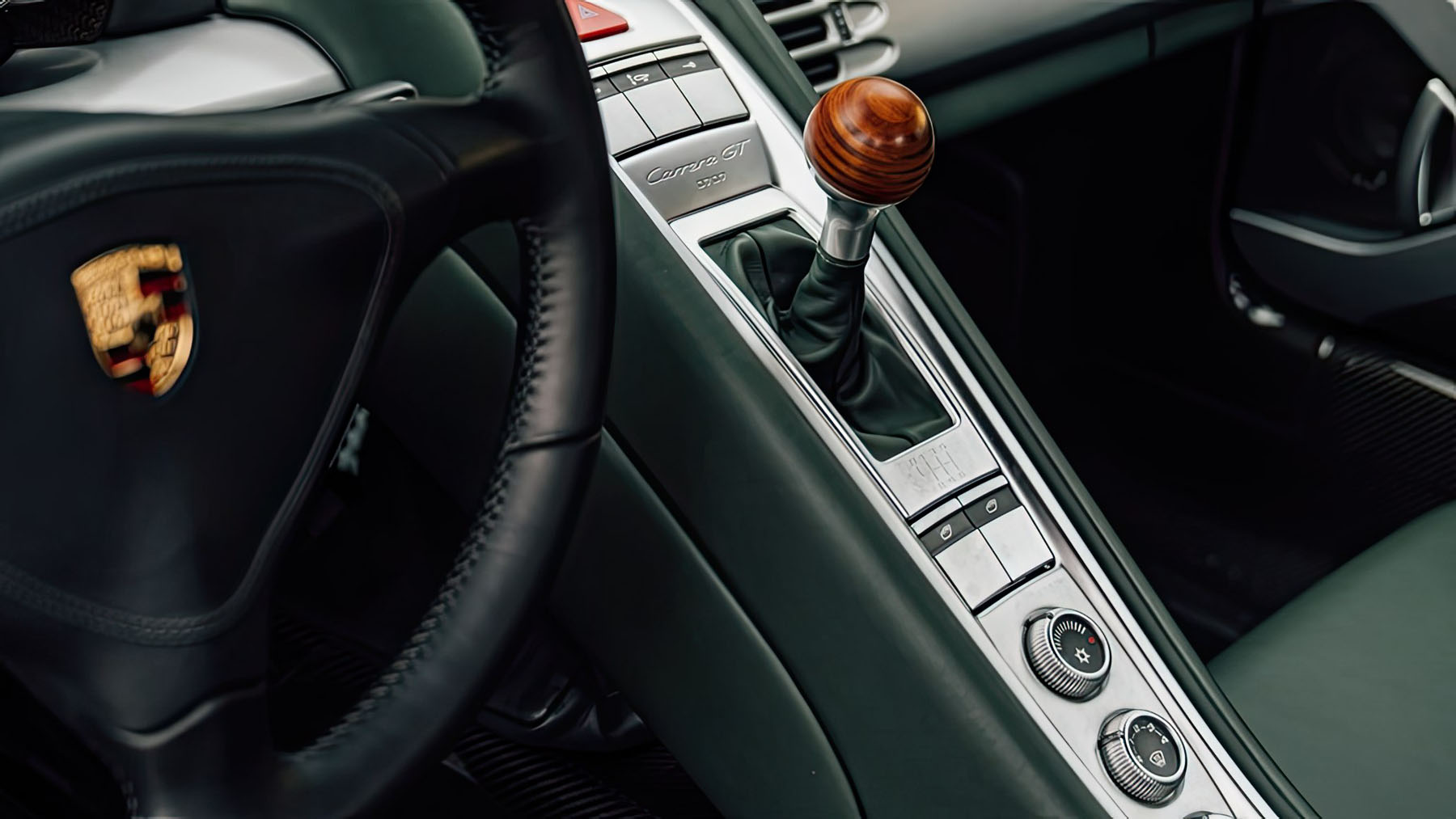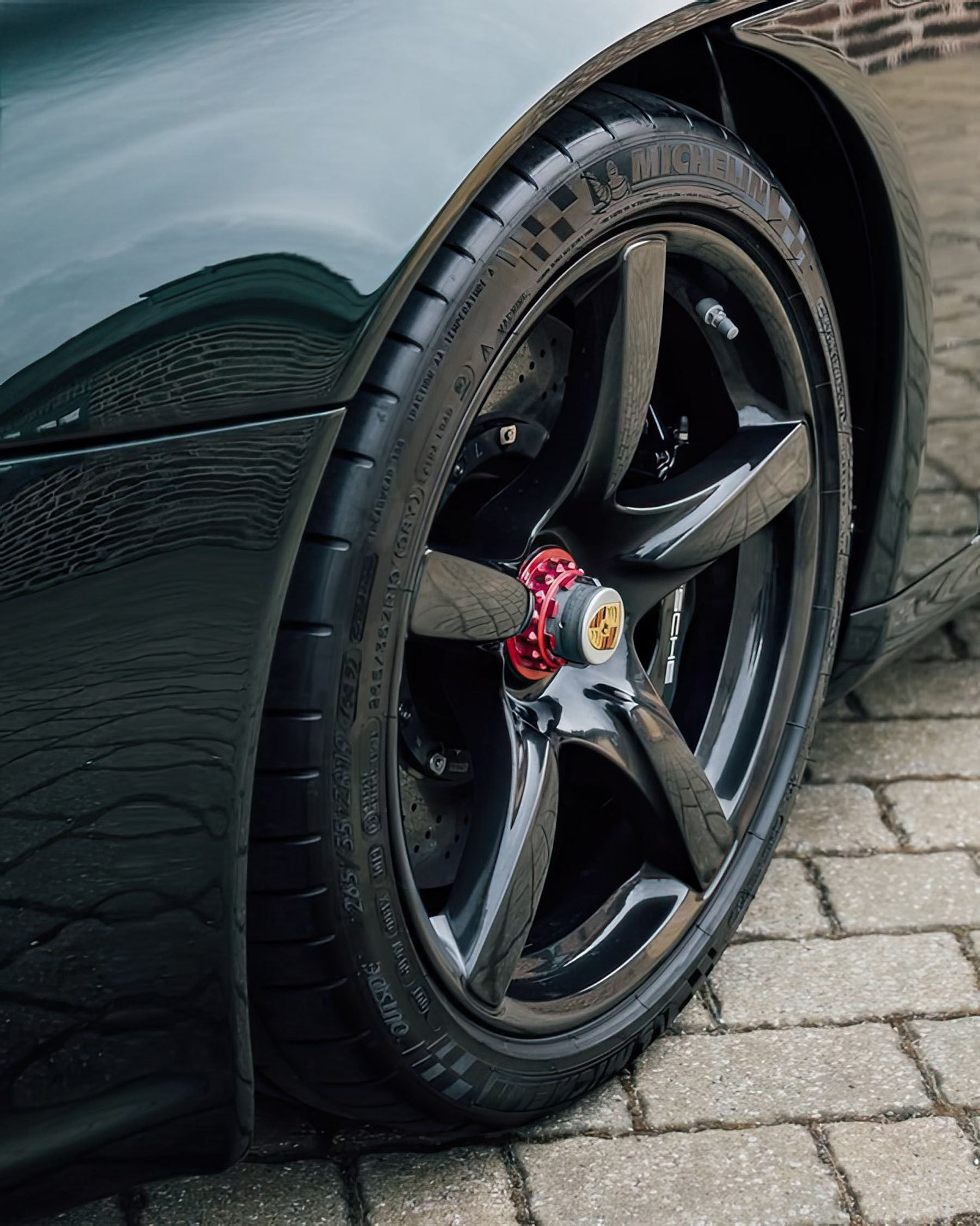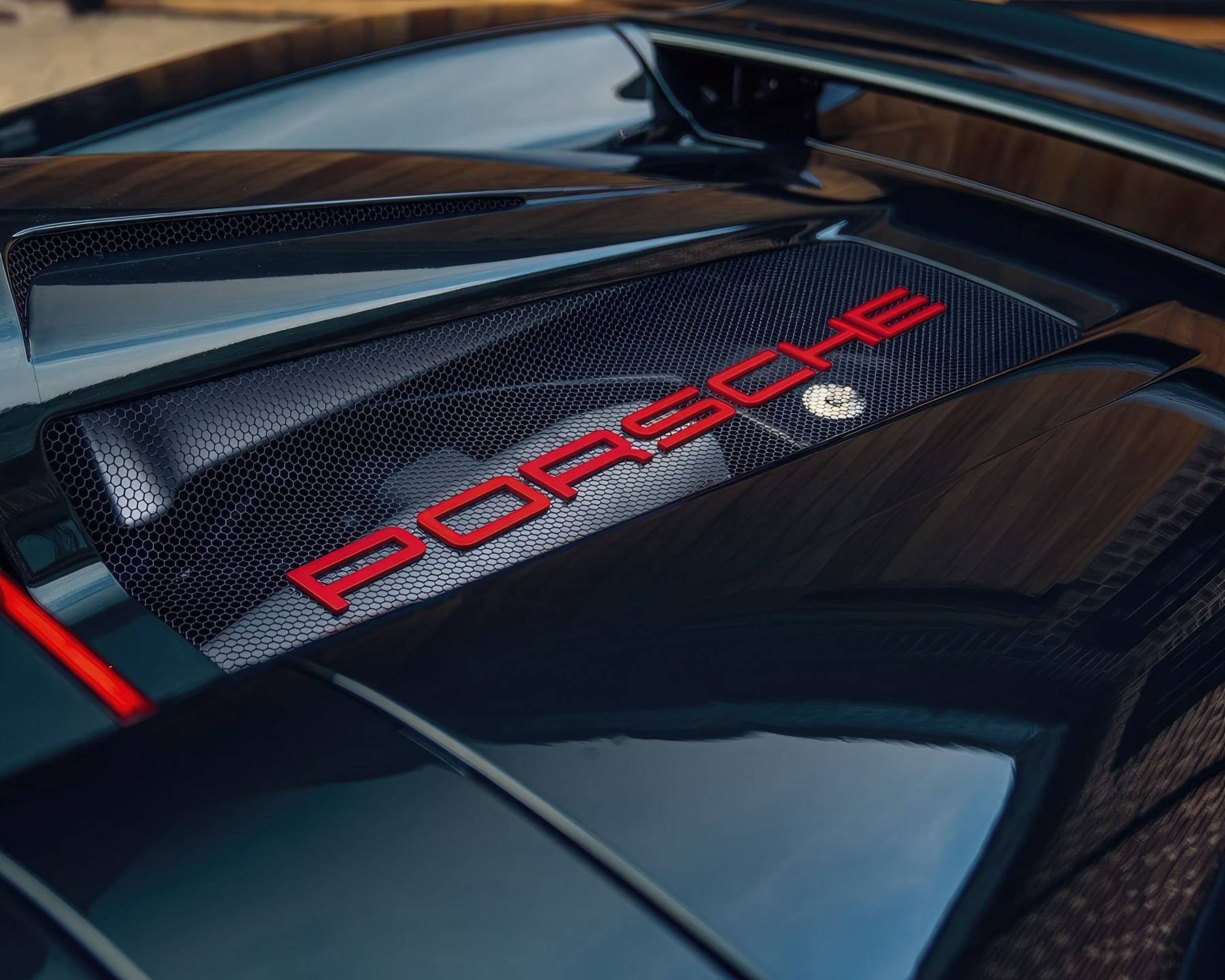Carrera GT background
In 1998, Porsche planned on a new Le Mans prototype for 1999. The car was initially intended to use a turbocharged flat-6, but was later redesigned to use a new V10 engine, pushing the project back to planned completion in 2000. The V10 was a unit secretly built by Porsche for the Footwork Formula One team in 1992 but had been shelved. The engine was resurrected for the Le Mans prototype and increased in size to 5.7 litres. Unfortunately, the project was canceled after two days of testing for the first car, in mid-1999, mostly due to Porsche’s wish to build the Cayenne SUV with involvement from Volkswagen and Audi, thus requiring engineering expertise to be pulled from the motorsports division. It was also speculated that VW-Audi chairman Ferdinand Piëch wanted Audi’s new Le Mans Prototype, the Audi R8 not to face competition from Porsche in 2004.
Porsche did keep part of the project alive showing a concept car at the 2000 Geneva Motor Show, mainly in an attempt to draw attention to their display. Surprising interest in the vehicle and an influx of revenue provided from the Cayenne aided Porsche’s decision to produce the car, and development started on a road-legal version, to be produced in small numbers at Porsche’s new manufacturing facility in Leipzig. Porsche started a production run of Carrera GTs in 2004, the first Carrera GT went on sale in the US on January 31, 2004. The Carrera GT is powered by a 5.7 liter V10 engine producing 612 horsepower, good for a 0-60 sprint of around 3.5 seconds and a top speed of 205mph.
Carrozzeria Zagato
A coachbuilding firm based outside of Milan, Zagato remains the last independent Italian design house, still owned by the founding family 104 years later. Carrozzeria Zagato first opened its doors in 1919 to translate aeronautical learnings from the First World War to the automotive world. Known for their advanced design and innovative use of lightweight materials, the Zagato name has found itself on a wealth of ultra-high-end marques, including the likes of Aston Martin, Ferrari, and Lamborghini.
Porsche’s relationship with Zagato first started with the commissioning of a 356 Zagato Speedster by Porsche driver Claude Storez. His successes throughout the mid-fifties in a 550 RS Spyder, 356A Carrera, and 356 Speedster meant Zagato eagerly received the 29-year-old’s 356 Carrera Speedster in 1957. The duration of the works extended into 1958, and after successfully re-clothed in a streamlined body in white with red fins on the rear wings, the car was dispatched to Stuttgart, where Porsche would fettle the engine. Its first outing on the Tour de France Reims stage saw it place second behind eventual overall winner Olivier Gendebien.
Porsche and Zagato cross paths again
Fast forward to 2004, and the first of three years of production for Porsche’s Carrera GT would begin. Once more, the child of racing ambition, the Carrera GT’s routes can be firmly traced back to its predecessors: the 911 GT1 and the LMP-98 racing cars. In 2013, a Porsche collector living in Switzerland took his Carrera GT to the Milanese coachbuilders. Having never been a fan of the plateau behind the roll-over hoops and seeking a more Gran Turismo style, he tasked Zagato with redesigning the car in profile. Their efforts would subtly change the majority of parts to enhance the aerodynamics of the design and improve the elegance of the overall form.
The front bumper is slightly longer with the center section slightly lower, the vanes angled more aggressively, picking up the inside curves of the headlights when viewed head on. Unusually the changes to the front bumper do increase ground clearance somewhat with a sharper approach angle born from the new shape. The front wings, doors and sills remain the same, bar the addition of the trademark ‘Z’ to the rear sill section.
Towards the rear ¾ the changes are more dramatic. By introducing a ‘c-pillar,’ Zagato has visually increased the length of the cabin and it works well to mirror the curves of the large side air intakes. The rear decklid is all new, integrating an additional piece of glass into the car’s profile which works to channel air directly into the engine. Before work by Zagato, the V10 sourced its air from two NACA ducts on either side of the engine covers on the rear decklid. The new engine cover introduces the Porsche script between the two lengthened headrests that are now incorporated into the overall form and accentuating Zagato’s trademark ‘double-bubble’ roof.
The removable roof panels remain the same as the original elements meaning they can still be stored below the bonnet. The wing remains the same and rises to full height; below the wing, Zagato has added a small lip to improve airflow. The rear bumper of the car sees several other subtle changes. The exhaust system has been revised and includes new tips; slightly louder than standard, Zagato worked hard to retain the instantly recognizable pitch of the V10.
The next step
This Porsche Carrera GT Zagato is #4 of just five cars produced. The original #00 prototype (built-in 2013) sits outside of these cars and remains with its Swiss owner to date. The 5 production cars were built using existing road cars that the owners sent to Zagato between 2018 and 2019. This car, when new, was one of 676 examples supplied new to the USA, and as such, its 17-digit VIN number starts with the WP0CA sequence. It was ordered new to McKenna Porsche of Los Angeles and received its pre-delivery inspection in May 2005.
This Zagato conversion took place over six months in 2018/2019, with the car transported to Italy for the work to be carried out. As part of the conversion, the car was again stripped back to a rolling chassis and repainted in a bespoke dark metallic green, with wheels in graphite. The brake calipers were refinished in gloss black. The total cost for the conversion, including the new body panels, was in the region of 400,000 Euros, and no further cars will be converted, as evidenced by the contract on file between Zagato and the current owner.
This example, Chassis 4 of the 5 conversions, stands apart as this is the sole Carrera GTZ to be completed with a FULL bespoke Zagato interior. Updates to the interior were performed on the seats, central tunnel and center console, gearstick gaiter, lower dashboard, armrests, door cards, A-pillar, and sun visors. This was an additional cost to the conversion.



